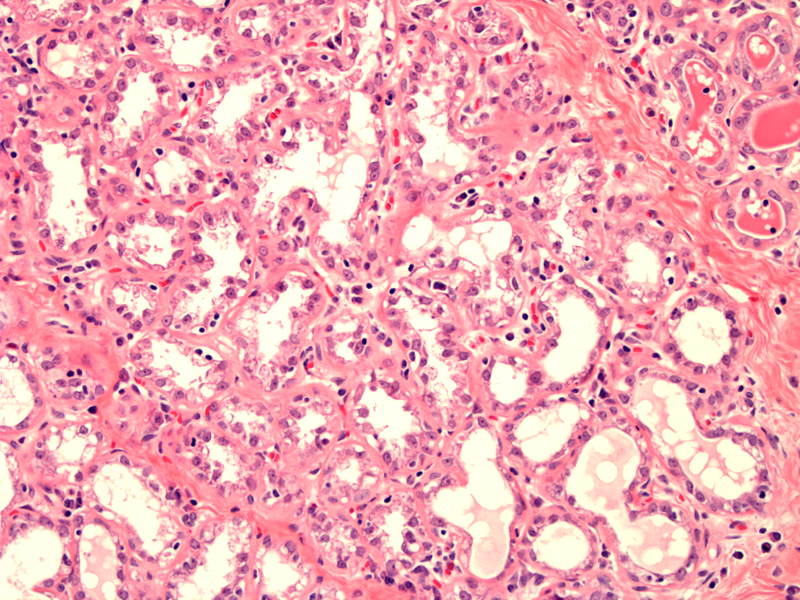

The histologic features of a lactating adenoma are identical to the usual lactational changes seen in pregnancy or nursing. This image demonstrates back-to-back glands composed of hobnail epithelial cells containing large vacuoles. Nucleoi are often visible.
The epithelial cells are plump, and line dilated lobular spaces.
Acellular eosinophilic material within the lumens is also a characteristic feature of lactating adenoma.
FNA of a lactating adenoma often contains many bare nuclei in the background.
The FNA is modestly cellular and reveals a distinct lobular pattern of growth.
There is a plentiful amount of cytoplasm although the foamy nature is not well-appreciated in this example. There is no noticeable size difference between these nuclei themselves and those of well-differentiated ductal adenocarcinoma.
AN intact lobule seen here shows that the nuclei contain uniform but noticeable nucleoli. The tubules here lack secretory material.
Higher power does reveal a frothy nature to the cytoplasm which was not well appreciated in the corresponding diff-quick slide.
During pregnancy, proliferative and secretory changes do not occur evenly throughout the breast. There may be discrete foci of increased lactational (secretory) hyperplasia, which may form palpable and radiologically detectable masses. These aggregates of secretory lobules are called lactational adenomas, and they should be distinguished from pre-existing fibroadenomas that exhibit lactational change. In the latter lesion, the characteristic features of fibroadenomas should still be detectable.1,2
Lactional adenomas are the most common breast mass in a young pregnant female. However, this mass must still be evaluated to rule out more concerning neoplasms.
Rosen PP. Rosen's Breast Pathology. 3rd Ed. Philadelphia: Lippincott Williams & Wilkins; 2009:14, 195-7.
Baker TP et al. Lactating Adenoma: A Diagnosis of Exclusion. The Breast Journal (2001)7:5;354-7.
For more information about lactational changes for the breast, please view our pregnancy-like lactational changes case.
